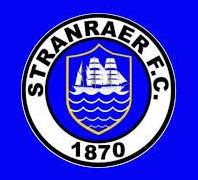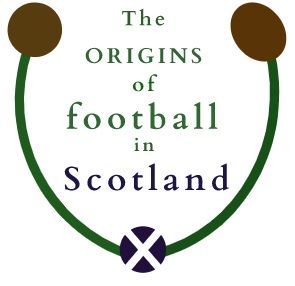Stranraer
- and the Coming of Football to Scotland
Perhaps one of the most remarkable stories of the coming of football to Scotland, and one of the least known, is that of Stranraer. Founded officially in 1870 it is the third oldest club in the country. Only Queen's Park and Killy officially predate it and even then there are doubts, for which we have to thank not SFHG research but a unique piece of work, The First Thirty Years, preserved on the Internet from 2002 and by a John Boyd, of whom nothing more is known just yet.
In it he states that already by 1865, two years before Glasgow could even have heard of Queen's Park, Stranraer, The Toon, already had three clubs - Lodge, Sheuchan Swifts, Sheuchan being a main street to this day, and Waverley, Waverley Lane being another - and perhaps even a fourth. Moreover, that same year a recorded game was played, 11-a-side, presumably to some form of agreed rules, away against Cree Rovers in Newton Stewart. It was made possible by the new-fangled railway and was not only with a clearly organised, representative "town" team but one for which we also have the on-field line-up. And that was a dozen years before Stranraer F.C. first entered the Scottish Cup in 1877, to be beaten in the First Round 6-0 by Queen of the South Wanderers, and a three-quarters of a century before it joined the League, with many a game played in between. They included a second early one, in about 1870, as also the three Toon clubs combined, this time versus the 3rd Kirkcudbright Volunteers at Palmerston in Dumfries, and 1875 against Cree once more, for both of which again we have knowledge of those taking part.

In 1865 in goal was Cluckie. Then there was Warren and Simpson, Bell and T. Alexander. The captain was McQuiston and he was said to be joined by R. and G. Porteous, Craig, Nish and a second Alexander, P. Furthermore, with amazing continuity, Cluckie remained in goal in 1870 as, in the wider team were also Warren and Simpson, Bell, now J.B. Bell, McQuiston, still captain, Nish, the Porteouses, one, Robert. And they eight remaining were joined by Mackie, Fraser and Mckinstrae. Moreover, even in 1875 Warren and Bell were playing on still.
However, between 2002 and now something has changed and that is the explosion of the Internet itself and, more-to-the-point, the availability of resources on-line, notably ScotlandsPeople and similar. It has meant that we can look for and at the names of provided in the line-ups, specifically in the 1861, 1871 and 1881 censuses and for males aged between, say, fifteen and thirty. The results show almost all appear in Stranraer itself and surrounding nearby villages. And some of the names we can even be more specific. McQuiston was twice the captain, none appears on the local record but there is one on Glasserton and it is an Ayrshire, most specifically an Ayr name. So where had he learned the game? The Cluckies and Porteouses were Leswalt and Kirkholm people. And then there is Bell, J.B. Bell, a stalwart of the local game for at least a decade, and here we have perhaps a specific candidate - John Bell, recorded with a middle-name of both Broadfoot nd Bradhurst. He was born in 1848 in Stranraer, so was seventeen in 1865. He became a joiner to trade. In 1871 still in the town he married Isabella Boan, who actually lived on Sheuchan St. at the time, although he gave an address in Glasgow. And it was there in Govan from 1872 that all their five children were born and from where by 1881 they all disappear from the records.
But the question remains, how and why was football, but not necessarily yet the Association variant, played so early in Stranraer and indeed Newton Stewart and Dumfries? Where did it come from? And answer there is as yet none. Unless it, as the Anwoth story from two hundred earlier tells us, it was and remained indigenous.
In fact the nearest we come in South-West Scoland to any connection is the private work done by the laudible Richard McBrearty of the Scottish Football Museum and posted on his personal blog, The Origins of Football in Scotland. He states that John Douglas, the Marquis of Queensberry, and incidentally father of Lady Florence Dixie, later the first sponsor of the women's game, returned to his Kinmount estate by Annan from Cambridge in 1866. And that same year he set up under Association Rules, Kinmount F.C., which in itself is literally game-changing because Queen's Park by a year then ceases to be the first "soccer" club in Scotland. Furthermore, three more teams, Annan (formed 1867), Springkell (before 1870) and, importantly for the purposes of Stranraer, Dumfries (1869/70) then emerged to join Kinmount by the end of the decade, with games played in 1868 between Kinmount and Annan, presumably to FA rules-ish but 15-a-side, the first at least with the Marquis in the team and scoring.
Back to the SFHG Home page
